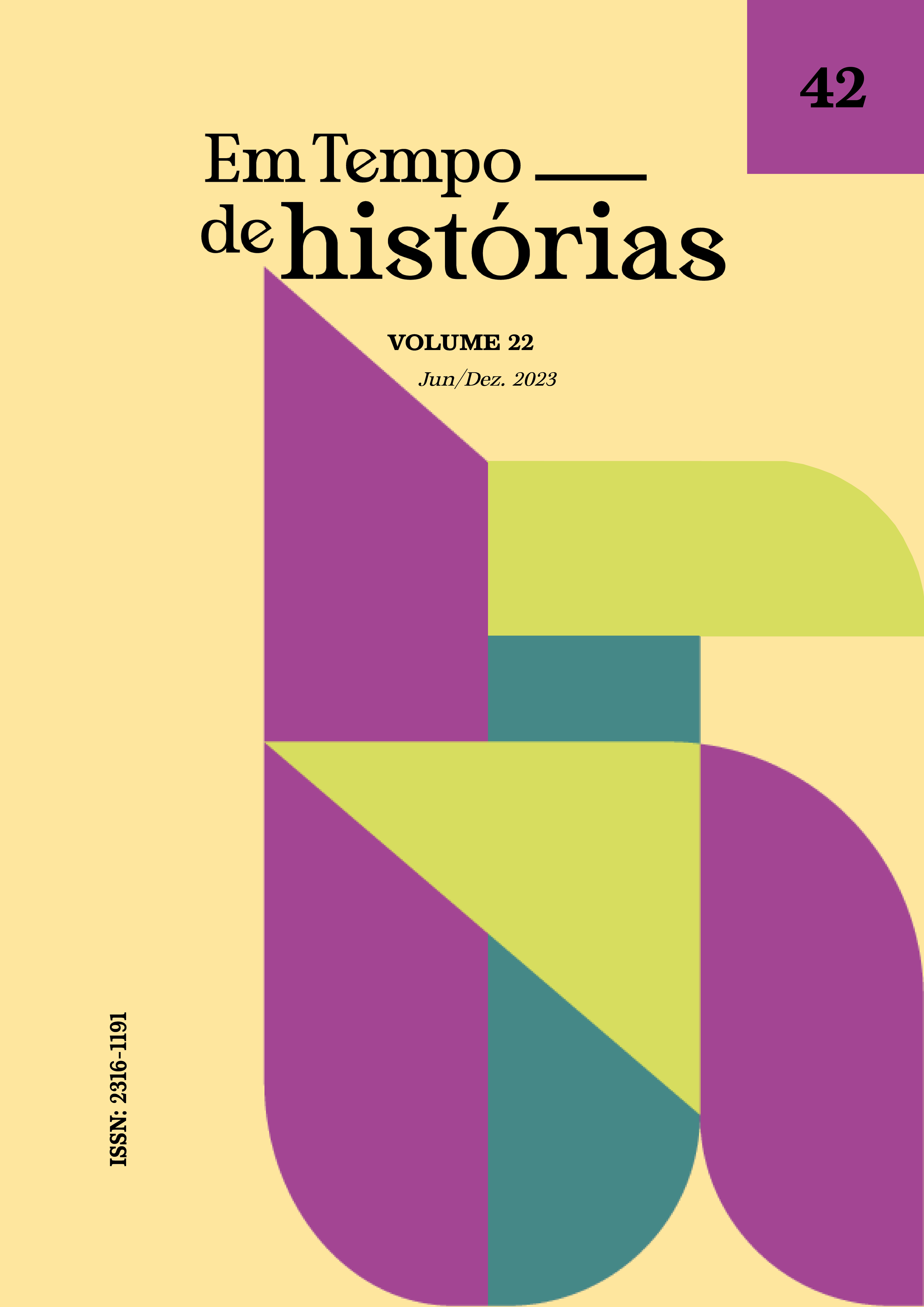Apocalyptic traditions about Jesus of Nazareth and the teology of Two Powers in Heaven
DOI:
https://doi.org/10.26512/emtempos.v22i42.51581Keywords:
Apocalypticism, Two Powers in Heaven, Historical Jesus researchAbstract
The visionary experiences typical of Jewish apocalypticism open the discussion about the strict unity of God within Second Temple Judaism, commonly described as monotheistic. However, some visionary traditions associated with Jesus of Nazareth seem to presuppose the existence of a secondary divine figure, thus challenging our apprehension of a widely disseminated image of monotheism in Second Temple Judaism. From the 2nd century C.E. on, this secondary divine figure has been polemically treated by the rabbis, who laid hold of the concept of Two Powers in Heaven. Although a later concept, it can shed some light on our comprehension about the beginning of Jesus' movement and the cluster of historical memories formed around Jesus of Nazareth.
Downloads
References
ALAND, Kurt; ALAND, Barbara; KARAVIDOPOULOS, Johannes; MARTINI, Carlo M; METZGER, Bruce M. (Ed.). Novum Testamentum Graece. 28. ed. Stuttgart: Deutsche Bibelgesellschaft, 2012.
ALLISON, Dale C., Jr. Jesus of Nazareth: Millenarian Prophet. Minneapolis: Fortress, 1998.
CHESTER, Andrew. Messiah and Exaltation. Tübingen: Mohr Siebeck, 2007.
COLLINS, Adela Yarbro. The Origin of the Designation of Jesus as "Son of Man." Harvard Theological Review, v. 80, n. 4, p. 391 407, 1987.
COLLINS, John J. (Ed.). The Oxford Handbook of Apocalyptic Literature. Oxford: Oxford University Press, 2014.
COLLINS, John J. The Apocalyptic Imagination: An Introduction to Jewish Apocalyptic Literature. 3 ed. Grand Rapids: Eerdmans, 2016.
COLLINS, John J. The Invention of Judaism: Torah and Jewish Identity from Deuteronomy to Paul. Oakland: University of California Press, 2017.
CRAFFERT, Pieter F; BAKER, John R; WINKELMAN, Michael J. (Ed.). The Supernatural After the Neuro-turn. Abingdon: Routledge, 2019.
DECONICK, April D. (Ed.). Paradise Now: Essays on Early Jewish and Christian Mysticism. Atlanta: Society of Biblical Literature, 2006. (Symposium, 11).
EHRMAN, Bart D. The Orthodox Corruption of Scripture: The Effect of Early Christological Controversies on the Text of the New Testament. Oxford: Oxford University Press, 2011.
HAYMAN, Peter. Monotheism — A Misused Word in Jewish Studies? Journal of Jewish Studies, v. 42, n. 1, p. 1-15, 1991.
HENDEL, Ronald. Mind the Gap: Modern and Postmodern in Biblical Studies, Journal of Biblical Literature, v. 133, n. 2, p. 422-443, 2014.
HOLMÉN, Tom; PORTER, Stanley E. (Ed.). Handbook for the Study of the Historical Jesus. Leiden: Brill, 2011. 4 v.
JACOBSON, Howard. The Exagoge of Ezekiel. Cambridge: Cambridge University Press, 1983.
MARCUS, Joel. Jesus' Baptismal Vision, New Testament Studies, v. 41, n. 04, p. 512-521, 1995.
NICKELSBURG, George W. E; VANDERKAM, James C. 1 Enoch: The Hermeneia Translation. Minneapolis: Fortress, 2012.
NOGUEIRA, Paulo Augusto de S. (Org.). Religião de visionários: Apocalíptica e misticismo no cristianismo primitivo. São Paulo: Loyola, 2005.
ORLOV, Andrei A. The Glory of the Invisible God: Two Powers in Heaven Traditions and Early Christology. London: T&T Clark, 2019.
SCHÄFER, Peter. Two Gods in Heaven: Jewish Concepts of God in Antiquity. New Jersey: Princeton University Press, 2020.
SEGAL, Alan F. Two Powers in Heaven: Early Rabbinic Reports about Christianity and Gnosticism. Leiden: Brill, 2002.
THEISSEN, Gerd; MERZ, Annette. O Jesus histórico: Um manual. 3. ed. São Paulo: Loyola, 2015. (Bíblica Loyola, 33).
Downloads
Published
How to Cite
Issue
Section
License
Copyright (c) 2023 Em Tempo de Histórias

This work is licensed under a Creative Commons Attribution-NonCommercial 4.0 International License.
Autores que publicam nesta revista concordam com os seguintes termos:
- Autores mantém os direitos autorais e concedem à revista o direito de primeira publicação, sendo o trabalho simultaneamente licenciado sob a Creative Commons Attribution License , licença que permite que outros remixem, adaptem e criem a partir do seu trabalho para fins não comerciais, e embora os novos trabalhos tenham de lhe atribuir o devido crédito e não possam ser usados para fins comerciais, os usuários não têm de licenciar esses trabalhos derivados sob os mesmos termos.
- Autores têm autorização para assumir contratos adicionais separadamente, para distribuição não-exclusiva da versão do trabalho publicada nesta revista (ex.: publicar em repositório institucional ou como capítulo de livro), com reconhecimento de autoria e publicação inicial nesta revista.
- Autores têm permissão e são estimulados a publicar e distribuir seu trabalho online (ex.: em repositórios institucionais ou na sua página pessoal) a qualquer ponto antes ou durante o processo editorial, já que isso pode gerar alterações produtivas, bem como aumentar o impacto e a citação do trabalho publicado (Veja O Efeito do Acesso Livre).













